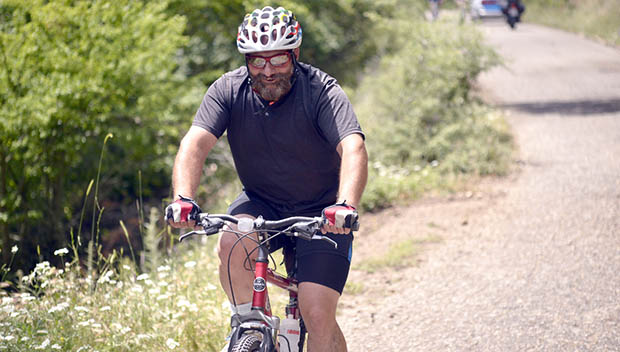
All triathletes must learn to work through certain challenges while training and racing. Bigger triathletes, such as Athenas and Clydesdales, often deal with more issues than their lighter counterparts. Though it varies, Athenas are typically women weighing more than 150 pounds and Clydesdales are men over 200 pounds.
After speaking with several of my larger (taller, heavier) training partners, I have identified some of their common challenges and come up with tips on how to deal with them.
More: What I Wish I Knew Before My First Race
Wetsuits
Wetsuits tend to be a pain for every athlete to get in and out of, and bigger athletes often have trouble finding wetsuits fitted to their size and comfort.
Athena triathletes have the option of using men's sizes, but the fit is usually less than perfect through the hips. Also, wetsuits are expensive, and athletes new to the sport may find their body shape changes as they develop in the sport; what fits like a glove one season may be too loose for the next.
One less expensive solution is to rent a wetsuit for the first season or two. Depending on where you live, you generally only need a suit for early- and late-season races, so the cost would still remain low. By renting, you can test out several different brands, styles and sizes, so when you are ready to purchase a suit, you will know which fits best.
More: 10 Training Rules for Triathletes
Hill Climbing
On the bike, climbing is a power-to-weight activity. Climbing hills is tough. While some riders are just built more for it than others, many triathletes struggle. The general truism is: A lighter rider does not have to generate as much power as a heavier rider because they have less weight to pull up the hill. Therefore, larger riders have two options: drop weight or learn how to manage the hills. Rather than trying to power up longer hills while pushing a big gear, drop to an easier gear and "spin" up the hill.
Also, stay seated while climbing, as this position utilizes your larger glute and hip muscles and thus uses less energy than standing on the pedals. Finally, incorporate hill workouts into your training routine. Even if you’re not built for climbing, you can still build the strength and gain the confidence needed to tackle the climbs.
Lower Leg Injuries
More weight means greater stress on joints and lower leg injuries (shin splits, Achilles issues and plantar faciitis), according to the athletes I spoke with.
To combat against injury, be sure to train with proper running shoes. Go to a running-specific store to be fitted for your shoes and have your gait analyzed. Another tactic is to ease into your running routine by slowly building duration and frequency—a run-walk routine may be the best choice early on in your program.
Finally, run on soft surfaces, such as the track, grass, smooth trails or the treadmill, and be careful not to do too much downhill running, as it can put even more stress on your joints. Remember, it is perfectly OK to walk.
Chafing
This is a common issue with all triathletes. Thighs, under arm and bra-strap areas are the most affected. Proper lubing, with a product such as Body Glide, prior to training and racing should lessen the irritation. Be sure to wear your race uniform in training (swim, bike and run) several times before your race, as you may get different chafed areas than in your training outfits.
Bra/Support Issues
Women's tri suits often come with a built-in bra, but for larger women they do not provide enough support. Wearing a sports bra under the suit can help provide the needed support. You can even elect to buy a men's tri top or tri suit so the bra fits under it more comfortably (plus, most men's one-piece suits zip up the front for easier access and are cut more fully under the arms).
Also, be aware that poorly fitted sport bras are often the cause for chafing and incorrect support. See if you can find a certified bra-fitter (yes, there is such a thing) to get the proper fit. Once you know your correct size, try Moving Comfort Fiona or CW-X sport bras for solid support.
Nutrition/Hydration Issues
For bigger, long-distance triathletes whose nutritional needs differ from lighter athletes, you will need more calories to fuel properly during a race. The general range is 200 to 350 calories per hour, but you should test your nutrition plan during training to see what works best.
Generally, larger athletes sweat more than smaller ones, so your hydration needs might be greater than the average athlete. As with your nutritional needs, you should experiment with fluid consumption (water and sport drinks) during your training sessions.
These are just a few of the challenges bigger triathletes often face with competing. Tackling these challenges early on will help you have fewer things to worry about come race-day.
 READ THIS NEXT: Nutrition Tips for Your First Triathlon
READ THIS NEXT: Nutrition Tips for Your First Triathlon


